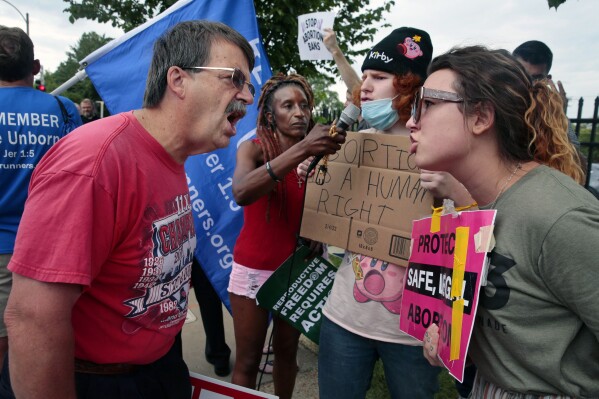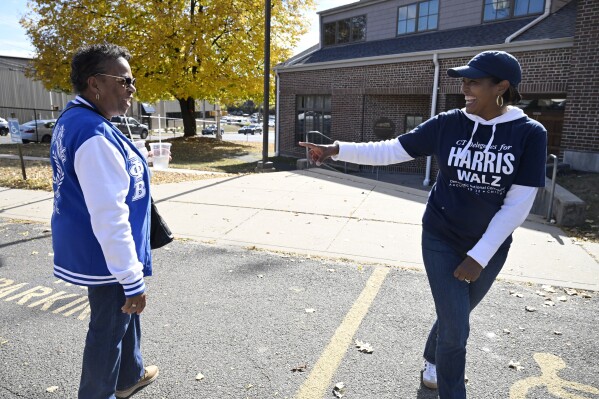Your support helps us to tell the story
Support NowThis election is still a dead heat, according to most polls. In a fight with such wafer-thin margins, we need reporters on the ground talking to the people Trump and Harris are courting. Your support allows us to keep sending journalists to the story.
The Independent is trusted by 27 million Americans from across the entire political spectrum every month. Unlike many other quality news outlets, we choose not to lock you out of our reporting and analysis with paywalls. But quality journalism must still be paid for.
Help us keep bring these critical stories to light. Your support makes all the difference.
Climate change made the 10 deadliest extreme weather events over the past two decades worse, contributing to the deaths of more than 570,000 people, scientists have said.
Climate scientists said the finding “underscores how dangerous extreme weather events have already become” with just 1.3C of global warming above pre-industrial levels.
It also highlights the urgency of cutting the greenhouse gas emissions driving rising temperatures and more extreme weather, they said, as the world is currently on track for 3C of warming by the end of the century – a level recently described by UN chief Antonio Guterres as “catastrophic”.
The assessment comes from the World Weather Attribution group and is published on the 10th anniversary of its formation in 2014 to analyse the impact of climate change on extreme weather events in their immediate aftermath.
It marks 20 years since the first “attribution study” – attributing the role of climate change in a weather event – was published by British scientists in 2004 for the devastating 2003 heatwave which killed 70,000 people in Europe.
This study should be an eye-opener for political leaders hanging on to fossil fuels that heat the planet and destroy lives
Friederike Otto, Imperial College LondonThe 10 deadliest events, which between them resulted in the deaths of least 576,042 people, include three tropical cyclones, four heatwaves, a drought and two floods.
They include the 2022 heatwave which gripped much of Europe, including record 40C temperatures in the UK, and led to tens of thousands of deaths across the continent.
The assessment highlights how climate change made the extreme temperatures seen that summer many times more likely and pushed them up by as much as 4C.
The analysis also looks at European heatwaves in 2015 and 2023, the latter of which saw temperatures in the western Mediterranean that would have been “impossible” without climate change.
In all 10 events “we see the fingerprints of climate change”, which made them more intense and more likely, the scientists said.
They warned the death toll is a “major underestimate” as there may have been millions more heat-related deaths not reported in official statistics.
Dr Friederike Otto, co-founder and lead of World Weather Attribution at the Centre for Environmental Policy, Imperial College London, said: “Climate change isn’t a distant threat.
“It worsened extreme weather events that left more than 570,000 people dead.
“This study should be an eye-opener for political leaders hanging on to fossil fuels that heat the planet and destroy lives.
“If we keep burning oil, gas and coal, the suffering will continue.”
With every fraction of a degree of warming, we will see more record-breaking events that push countries to the brink, no matter how prepared they are
Roop Singh, Red Cross Red Crescent Climate CentreThe researchers said many of the deaths caused by extreme weather were avoidable.
Countries should ramp up efforts to be prepared, including implementing early warning systems and boosting resilience in cities with measures such as wetlands, green roofs, urban forests and emergency shelters, and make sure infrastructure such as dams are climate-proofed so they will not fail.
But there are limits to how much communities can adapt to some of the most extreme events the world is seeing and these will become more frequent as long as fossil fuel use continues to push up global temperatures, they said.
Roop Singh, from the Red Cross Red Crescent Climate Centre, said: “The massive death tolls we keep seeing in extreme weather shows we are not well prepared for 1.3C of warming, let alone 1.5C or 2C.
“Every country needs to prepare for the future. Investing in early warning systems, updating outdated infrastructure and reorienting our policies to support the most vulnerable are key actions that can drastically reduce the impacts of extreme weather.
“But ultimately, we need to cut emissions. With every fraction of a degree of warming, we will see more record-breaking events that push countries to the brink, no matter how prepared they are.”
The 10 deadliest weather events of the last 20 years, which have all been worsened by climate change are:
– 2007: Cyclone Sidr, Bangladesh, which caused 4,234 deaths;– 2008: Cyclone Nargis, southern Myanmar, 138,366 deaths;– 2010: Heatwave, western Russia, 55,736 deaths;– 2011: Drought, Somalia, 258,000 deaths;– 2013: Floods, Uttarakhand, India, 6,054 deaths;– 2013: Typhoon Haiyan, Philippines, 7,354 deaths;– 2015: European heatwave, France, 3,275 deaths;– 2022: European heatwave, Italy, Spain, Germany, France, Greece, Romania, Portugal, UK, 53,542 deaths;– 2023: European heatwave, Italy, Spain, Germany, Greece, France, Romania, 37,129 deaths;– 2023: Storm Daniel, Libya, 12,352 deaths.
Disclaimer: The copyright of this article belongs to the original author. Reposting this article is solely for the purpose of information dissemination and does not constitute any investment advice. If there is any infringement, please contact us immediately. We will make corrections or deletions as necessary. Thank you.



